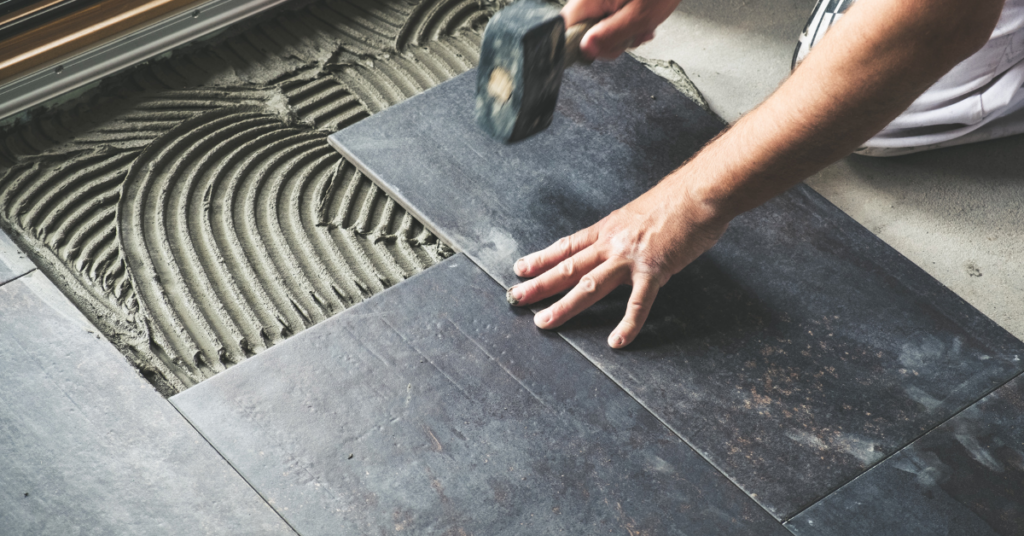
There are many types of tile, each with their own unique set of benefits and drawbacks. In this article, we’ll explore six popular types of tile and their best uses.
LISTS
TYPE 1: CERAMIC TILE
- Benefits: Ceramic tile is one of the most affordable and durable types of tile. It’s also easy to install and maintain.
- Drawbacks: Ceramic tile can be slippery when wet and is susceptible to chipping and cracking.
- Best uses: Ceramic tile is best used in areas that see moderate traffic, such as kitchens and bathrooms. It’s also a good choice for floors and walls that need to be easy to clean.
TYPE 2: PORCELAIN TILE
- Benefits: Porcelain tile is more durable and less porous than ceramic tile. It’s also resistant to stains and moisture.
- Drawbacks: Porcelain tile can be expensive, and it’s difficult to install without professional help.
- Best uses: Porcelain tile is best used in high-traffic areas, such as entryways and kitchens. It’s also a good choice for wet areas, such as bathrooms and laundry rooms.
TYPE 3: GLASS TILE
- Benefits: Glass tile is beautiful and easy to clean. It’s also resistant to stains and moisture.
- Drawbacks: Glass tile can be expensive and difficult to install. It’s also susceptible to chipping and breaking.
- Best uses: Glass tile is best used in areas that need to be easy to clean, such as backsplashes and showers. It’s also a good choice for floors that see moderate traffic.
TYPE 4: STONE TILE
- Benefits: Stone tile is durable and has a natural beauty. It’s also resistant to stains and moisture.
- Drawbacks: Stone tile can be expensive and difficult to install. It’s also heavy and cold to the touch.
- Best uses: Stone tile is best used in areas that see moderate traffic, such as kitchens and bathrooms. It’s also a good choice for floors and walls that need to be easy to clean.
TYPE 5: METAL TILE
- Benefits: Metal tile is durable and has a modern look. It’s also easy to install and maintain.
- Drawbacks: Metal tile can be expensive, and it’s susceptible to scratching and denting.
- Best uses: Metal tile is best used in areas that see moderate traffic, such as kitchens and bathrooms. It’s also a good choice for backsplashes and accent walls.
TYPE 6: VINYL TILE
- Benefits: Vinyl tile is one of the most affordable types of tile. It’s also easy to install and maintain.
- Drawbacks: Vinyl tile can be slippery when wet and is susceptible to staining and fading.
- Best uses: Vinyl tile is best used in areas that see moderate traffic, such as kitchens and bathrooms. It’s also a good choice for floors that need to be easy to clean.
How to clean shower tiles without scrubbing
Assuming you have ceramic tiles, the easiest way to clean your shower is to use a product like Mr. Clean Magic Eraser. These erasers are specifically designed to lift away tough dirt and grime with little to no scrubbing required. Simply wet the eraser and rub it over the soiled areas of your shower until they’re clean. You may need to use a little elbow grease to get into the tough-to-reach areas, but overall, this should be a fairly easy and straightforward process.
If you don’t have a Mr. Clean Magic Eraser on hand, you can also clean your shower with a mixture of vinegar and water. Simply combine equal parts vinegar and water in a bowl and dip a clean sponge into the mixture. Rub the sponge over the dirty areas of your shower, and then rinse away the residue with clean water.
CONCLUSION
There are many types of tile to choose from, each with their own set of benefits and drawbacks. When choosing tile for your home, it’s important to consider the intended use and the level of traffic the area will see. Ceramic, porcelain, and vinyl tiles are good choices for areas that see moderate traffic, while glass and stone tiles are better suited for high-traffic areas. Metal tile is a good choice for backsplashes and accent walls.












